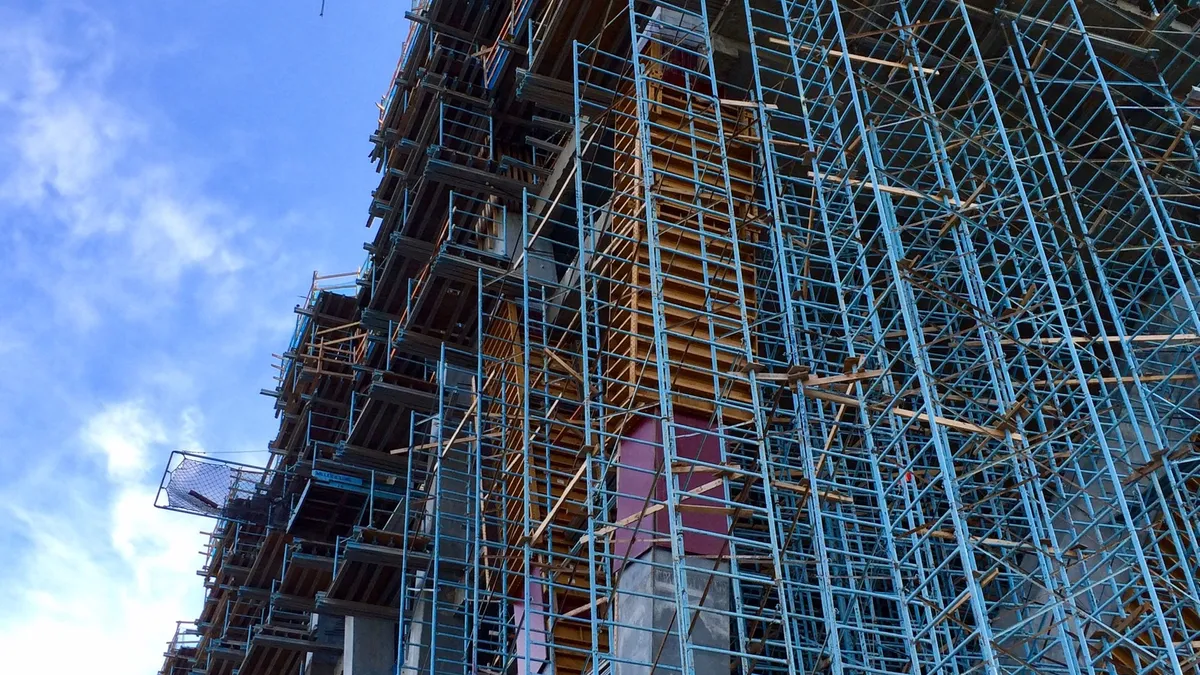Dive Brief:
- The American Institute of Architects' semi-annual consensus report of construction industry leaders predicts a 5.6% 2017 increase in the nonresidential sector, down from 2016's overall pace of 8%.
- The AIA said the commercial segment of nonresidential — office construction in particular (+10.6%) — will drive this year's growth but that the industrial segment will remain substantially unchanged.
- In a look ahead, the AIA predicted that institutional's growth will exceed that of commercial's in 2018, with the amusement-recreation (+7.7%) and educational sectors (6.3%) driving that jump.
Dive Insight:
The AIA Consensus Construction Forecast Panel projects construction business conditions for the next year to 18 months. Dodge Data & Analytics, Wells Fargo Securities, IHS-Global Insight, Moody’s economy.com, ConstructConnect, Associated Builders & Contractors and FMI are all members of the panel.
The AIA report highlighted the fact that the national unemployment rate, as well as that of the construction industry, ended 2016 at below 5%, making labor demands one of the biggest challenge moving forward. Industry groups have banged the drum about the labor shortage for years and are calling on the new Trump administration to include a career training initiative with any official infrastructure program.
While the possibility of another recession is always something economists consider while on the economic-numbers watch, the AIA said there is overall healthy income growth, still-low interest rates and high confidence in both the consumer and business categories — all of which will contribute to construction growth this year.
Not only does President Donald Trump's infrastructure program have the potential to affect construction this year, but a repeal of the Affordable Care Act could adversely affect the healthcare segment, according to the AIA. However, an anticipated rollback of regulations could streamline the construction process in general, saving builders money, time and aggravation. Trump has already ordered federal agencies to streamline the regulatory and environmental review process for "high-priority" infrastructure projects. Other initiatives dealing with tax reform, immigration, trade and energy policy could also affect the construction environment for the years to come.
ConstructConnect raised its projections for 2017 back in November and predicted that nonresidential construction starts would increase 6.8% from 2016, which it downgraded to a 6.2% increase in starts from 2015. Alex Carrick, chief economist for ConstructConnect, told Construction Dive earlier this month that, like the AIA, he expects an increase in office construction in 2017, although his projections (11.3%; $20.5 billion) were slightly higher than the AIA's. "The cycle seems to be pretty strong," he said, as the segment heads toward the previous highs of 2007 and 2013.














